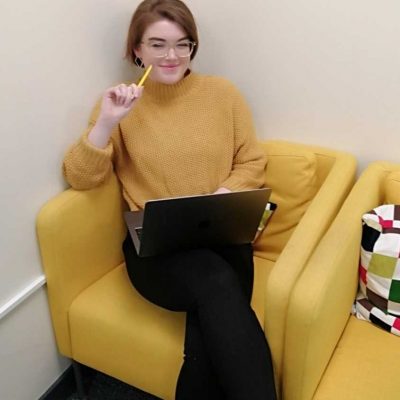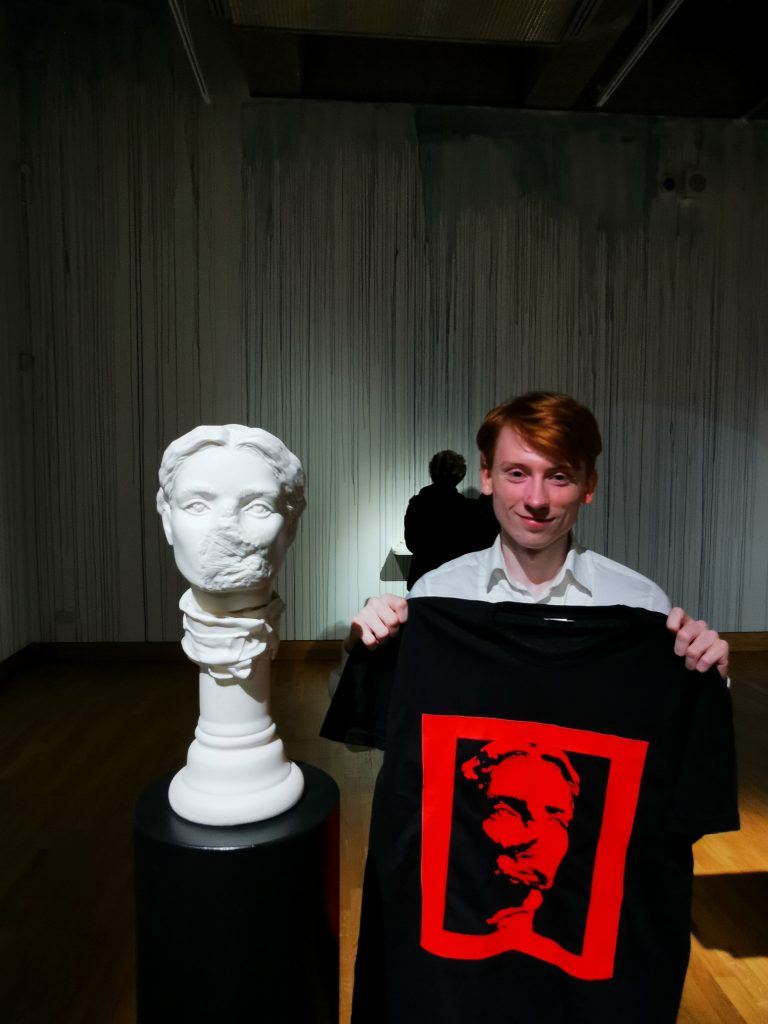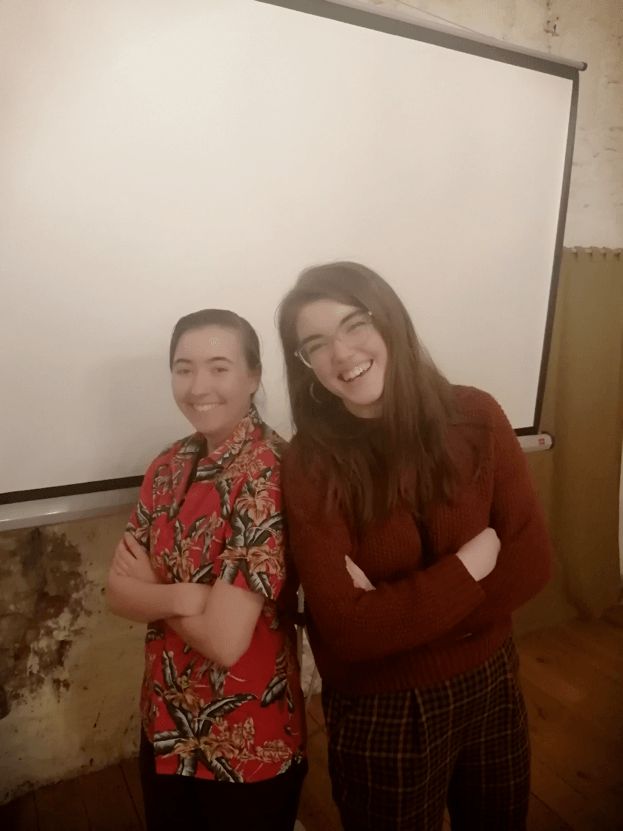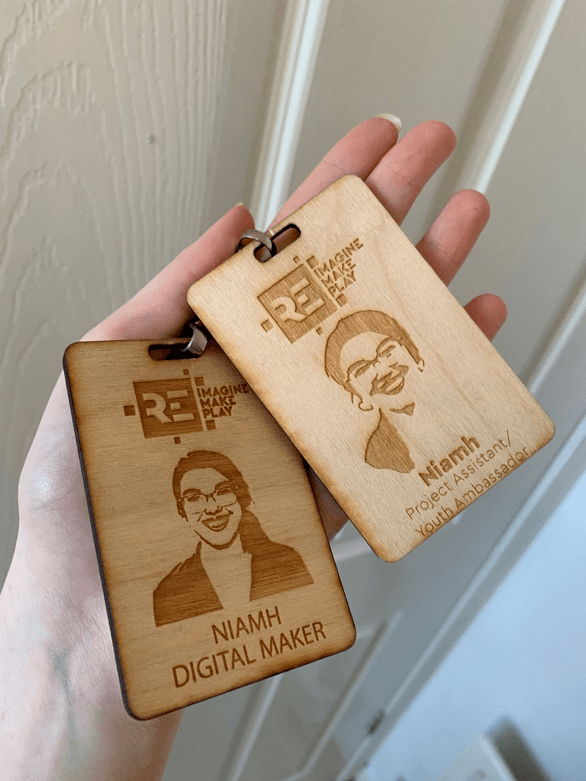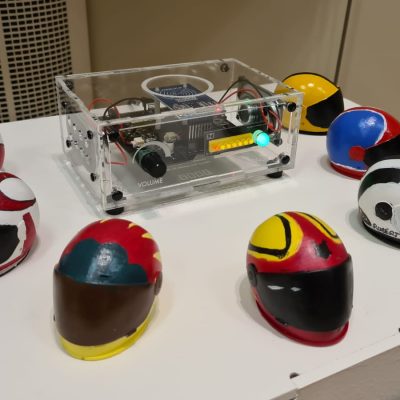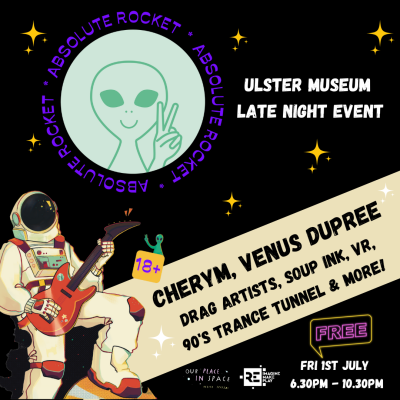As some of you may know, I recently started in a new role as a Project Assistant/Youth Ambassador on the Reimagine, Remake, Replay project. When I told people like my family and friends that I got this role, I described it as a dream job. It is busy and fast-paced but I thought I would take a moment to reflect on the past month. I’ve had plenty of the usual milestones but also, like everyone right now, unexpected challenges.
The first real milestone was facilitating my first workshop in the Ulster Museum, with Stephen and Aidan, as part of our new Digital Maker Club (a digital fabrication programme). This was particularly special to me, as my first time participating in an RRR programme was as part of the Digital Maker Club in Ulster Museum in 2018. I was nostalgic as I greeted our new participants, I thought of the first time I had showed up – not realising what lay ahead for me, how it would completely change how I saw the museum and my place in it. Having seen what the project had already achieved, I was enthusiastic to see what we could do next.
The next big milestone was starting a Motion Graphics course in Newry and Mourne Museum with Clodagh and Natalie Cole, our wonderful animation expert. This was also really special, as it was a bit closer to home for me. While I experienced RRR at the Ulster Museum after moving to Belfast as a student (and staying ever since), I commend the project’s commitment to delivery in rural areas, engaging several brilliant local museums and their communities. So this meant a road trip to Newry on a Thursday evening, off to Bagenal’s castle and a great group of participants.
These two programmes were up and running, we were in the middle of remaking museum collections in interesting and innovative ways. In the Ulster Museum, we had printed unbelievable vinyl designs in response to Ursula Burke’s amazing exhibition, A False Dawn. In Newry, we tried our hand at 3D modelling and invaded the museum with spaceship gifs. I was excited to visit more local museums that I had never been to and meet participants both recurring and new. But just as I was beginning to get a feel for my new role, like everything, this was put on pause.
I didn’t get to see the final creations that those participants would fashion. A conference I was due to speak at on Emotion in the Museum, organised by a team at University of York and York Museums Trust, had to be postponed. I was gutted, as I had been preparing my presentation for weeks (Clodagh and I may have even had matching outfits picked out). I had the chance to speak to a room full of museum practitioners and academics about something that really mattered to me. Evidently, this project not only amplifies the voice of young people in museums in Northern Ireland but in the museum sector more broadly. But they made the wise and right call to postpone, anticipating the closures, cancellations and rescheduling that would follow and that are now the norm for us all.
So what now?
There is no doubt that Covid-19 has created a lot of uncertainty in every aspect of peoples’ lives – our work, home lives, what we do for fun, how we learn and most of all our health. I’m no exception, I was at a time of change anyway – with big plans and excitement to carry them out. We have been faced with an unexpected challenge but it is one that we can respond to. This project was set up to respond to young people, to their exclusion from museum spaces. It works to enable young people to engage with collections, with their heritage, by creating their own responses to those collections. That is exactly what we will continue to do – in a responsive way.
The most obvious challenge we face is that of the museum as a physical space that holds material objects. Our project aims to bring young people in to the museum – but now no one is getting in. We can’t let the engagement stop there. We need to bring the museum to the young people, in all their disparate areas, in all their newfound situations.
How will we do this?
We are going to use what we always have – our creativity and technology. Some of this we already have in place and will need to draw on further – like our booming (and boomerang-ing) social media channels. Some of this will entail new things, trial and error – video calls, platforms for remote access. Above all, the main thing will be listening to our participants, taking our lead from what they say and their experiences. That is something we will refuse to lose in a virtual operation/delivery. Everything will feel like a rush to digital, to get things back up and running but it will be important to take time and care when doing this and to recognise not everything can be business as usual.
Why will we do this?
With everything that is going on, a creative outlet will be more important now than ever. Connection and the sense of community we have built up over the project will be more important than ever. We know that our project achieves these things – we know because participants have told us. We won’t let them down when they need us (and a bit of craic) now more than ever.
What will this mean?
So it is time to rethink how exactly we deliver on our aims, how we engage our participants, what experiences and skills we can offer them while still maintaining the essence of what our project is. The challenges we face along with opportunities, encourage us to try new but effective ways of engaging with heritage. For example, by using video calls we can have participants from all across the country interacting, creating together and having a bit of craic. Evidently, it is away of bringing our spread out community together as well as bringing heritage home. Why wouldn’t we want to keep this going?
It is a time to appreciate those possibilities as well as overcoming challenges. However, it is also important to appreciate what doesn’t change. The last thing I’d like to reflect on and feel grateful for after a month in this job is the unwavering, invaluable support of all my colleagues and friends on this project. To every participant I’ve got chatting to, to those staff I’ve met from the museums and Nerve Centre, and especially to our project team. We are utterly spoiled with wonderful technology and riveting collections but really the people make this project what it is.
To sum up, it’s an absolute dream job – and it still is.
